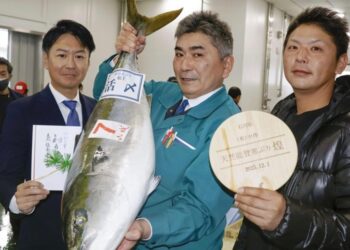ChatGPT’s impact on seafood retail – ChatGPT is shaping up to be a revolutionary tool in the retail world, promising to bring efficiency, personalisation and innovation to unprecedented levels. Particularly in the seafood segment, a sector characterised by particular challenges related to product freshness, supply variability and the need for accurate and timely communications, the use of ChatGPT can significantly transform retail operations.
In detail, ChatGPT can revolutionise the way seafood products are presented online, generating detailed and engaging descriptions that highlight freshness, provenance and sustainable fishing methods. This will not only enhance the customer shopping experience but can also educate consumers on responsible seafood consumption practices. ChatGPT’s ability to integrate cross-selling into these descriptions will guide customers towards complementary purchases, such as spices or specialised cooking utensils, increasing the average order value.
Fish stock management
Managing stocks of seafood products requires exceptional accuracy and responsiveness due to their limited shelf life. ChatGPT can offer accurate forecasts of demand levels, enabling more efficient stock management and reducing waste. Furthermore, the ability to analyse real-time consumption peaks and variations in purchasing can help retailers optimise logistics and warehouse operations, ensuring that fresh seafood is always available for customers.
In the seafood sector, where customers often seek advice on how to select and prepare products, ChatGPT can transform customer service. As a conversational chatbot, it can offer immediate and personalised answers, suggest recipes, provide advice on storage and cooking techniques, significantly improving the shopping experience. In addition, the analysis of customer reviews will enable retailers to better understand consumer preferences and adapt their product and service offerings.
The use of ChatGPT in physical shops can make the shopping experience even more interactive and personalised. Through interactive terminals or mobile apps, customers could receive personalised suggestions, detailed information on available fish products and advice on food pairings. This approach not only increases customer engagement but also stimulates more informed and satisfying purchases.
Ultimately, the integration of ChatGPT in retail, and particularly in the seafood segment, promises to address some of the industry’s most pressing challenges: from efficient stock management to personalising the shopping experience. However, it is crucial to proceed with caution, ensuring that AI-based solutions are implemented in an ethical and responsible manner, complementing but not replacing human interaction, especially in a sector so closely linked to consumer perceived trust and quality.
The impact of ChatGPT on the fish trade







